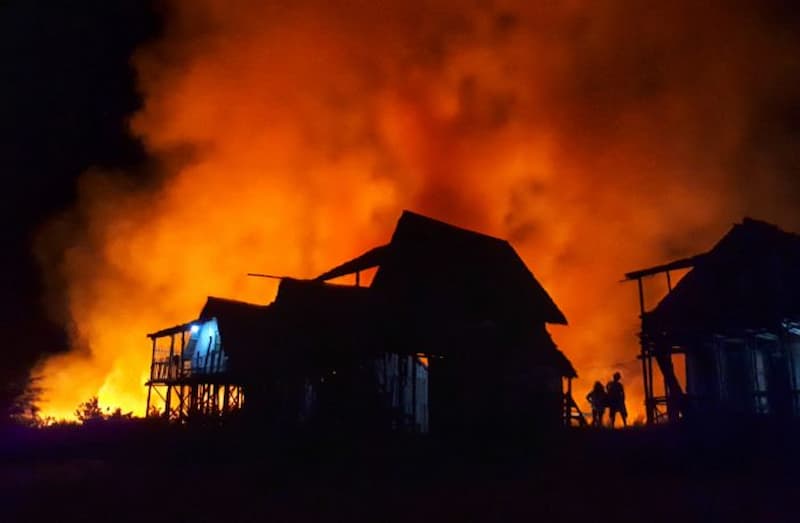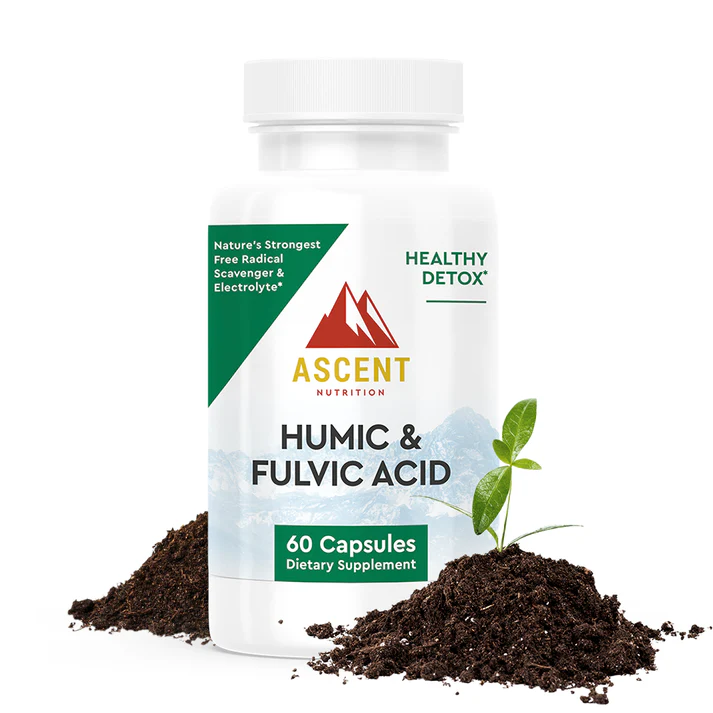(Cornelia Adams) In an emergency, you never know what will happen. Most people don’t know what they’ll find when disaster strikes because not many of us have lived through a real disaster. That’s no excuse to not prepare though and the old mantra is that it’s better to be safe than sorry. A good emergency preparedness checklist can help.
Related Rittenhouse Reveals His Plans for AR-15 He Used to Kill 2 in Self Defense During BLM Riot
by Cornelia Adams, November 14th, 2021
But before you can begin worrying about a checklist, there is a lot of thought and consideration that must be done first. Any generic emergency preparedness checklist off the internet might have some good ideas but could be totally mismatched for you in your situation.
Your preparedness plan must be tailored to your specific needs, your resources, location, strengths, and limitations. Your plan should be designed according to your family or team and the specific details of your situation. Be sure to plan with that scope of focus and you will forget less important things.
In this article, we will discuss everything you should consider when you are creating an emergency preparedness kit for your family. Since it’s the holiday season many preppers are also looking for ideas on fun and quirky gifts they can give to their family. In this unstable world, you can easily give an emergency preparedness kit to someone and jokingly blame it on Covid, but I bet the gift would be much better received even by the most pessimistic friend nowadays.
Here are some tips that are good to keep in mind, as you start to work on your own emergency preparedness checklist. Even if disaster never darkens your door, you will be much more prepared if you follow this plan for yourself.
What is in an Emergency Kit?
When thinking about emergency preparedness basics, it’s important to start with what you will need to survive in the event of an emergency that keeps you at home. This is commonly referred to as an “emergency kit”. Your kit should cover the basics of food, water, clothing, and shelter at a minimum for everyone in your group.
Some of the essentials are long-term storable food, a method to collect and disinfect water sufficient for the size of your group, items for sanitation, first aid, and shelter from the elements. Additional resources could be communication and lighting. For example, make sure you have a battery-powered radio, flashlight, and extra batteries for flashlights or headlamps, in case you lose power. You may also want to include important documents in your kit that prove where you live in case you are forced to evacuate, and they are controlling access back to your home area.
Start Small
As a prepper, it is important to take time before disaster strikes to learn more about emergency preparedness. If you are new to prepping, we have a lot of content already out there that gives excellent tips to help you get started.
- Learn about storage methods for water, food, clothing, and other basic needs.
- Find out how to purify water.
- Learn how to make emergency shelters.
- Find out how to use a first aid kit.
- Find out how to use a fire extinguisher.
- Learn about emergency communication devices.
Once you start learning the basics, you can build a survival kit for your specific needs. Don’t panic if disaster strikes and you don’t have every single supply you ever need! It is important to remain calm and take the time to think about how to deal with your situation.
One of the benefits of starting to prepare like this is that you get to visualize and plan for how you would react to different situations while you are safe and calm. This early preparation will help you when something really happens.
Think About Different Situations

Thinking through likely scenarios will help you make plans. For example, what would you need to consider if a spouse was going out of town and would be a long time before they come back? What if a natural disaster happened during that time? What would you do? How would you communicate with them if they were stranded? Your disaster could even be more mundane like a job loss or extended illness.
There are a lot of different scenarios that could happen that would require being prepared. To be prepared for all those different scenarios, the best option is to have a plan of attack that you have rehearsed well in advance.
Go Slowly and Get the Right Equipment for the Situation
Some natural disasters require different solutions and plans. With flooding and hurricanes, many people are wondering how they can best prepare for any emergency. It can be easy to feel lost when there are so many different things to consider, but these tips can help you get started:
- Think about what your family should do if there is a sudden emergency like a fire, tornado, or other natural disaster.
- Create an emergency preparedness plan that you can share with friends or other family members so they know what your plans are and potentially where they can find you if something happens.
- Plan for different types of emergencies, including blackouts, floods, hurricanes, earthquakes, and pandemics.
- In some cases, it may make sense to discuss your emergency plans with your employer and make sure they are aware of any pre-existing medical conditions for your family members.
Create Your Emergency Preparedness Kit Checklist
Now that you have considered some of the things you should prepare for, it’s time to start making lists. To create an emergency preparedness kit checklist, you should first create a list of the items you would have ideally to deal with the issues you identified in your planning.
Some people find it’s easier to prepare a well-stocked emergency kit that they keep in their vehicle. It is especially useful for those who are required to leave home for work at a job, or who, for example, live alone or with others who are not as prepared as they should be. In the event of a major disaster, this checklist and the gear in your kit will save your life or the lives of your friends or colleagues. Here are the basic and main supplies that you might need to survive for a few days or long enough to get back home:
- Food and water – Enough for you for 2-3 days in the climate you live in.
- Tools and shelter – Basics like a knife or multitool, tarp and sleeping bag or outerwear.
- Communication and lighting – Simple battery powered radio and headlamp
- First aid and sanitation – wipes and bandages. Potentially a tourniquet.
- Kids and pets – vary by need and age.
- Documentation and evacuation – personal files on a flash drive and paper maps.
Also, think about how tied your resources are to the Internet and the gadgets that help you to stay connected to the rest of the world. For those who work remotely, this may be an important part of your emergency preparedness checklist.
Virtually every document or record I would need is online in one place or another. Health records, automatic bill payments, and purchase history are all electronic. If I needed to provide a paystub, I couldn’t do that without access to a computer or phone and the internet. It’s the same with utility bills, bank information, and investments that I don’t have physically stored.
Implementing your emergency preparedness checklist:

Starting Your Emergency Prep (Step 1)
You should already know that for virtually every situation you won’t be able to predict when an emergency will happen. That’s why it is important to be prepared now and continually. This is not something that you should just purchase and sit in the closet. The best way to ensure you are “prepared” is to have an emergency kit in an accessible place and view the world with a different mindset that puts preparedness in Its proper place in all your planning.
Building Your Emergency Kit (Step 2)
What’s the best way to be prepared for a disaster? Start at the beginning with a checklist. Follow the steps in the checklist you created to prepare for a disaster where you live. Consider your situation. This means your location determines what needs you need to prepare. For example, a fire-prone area may need a lot more water and a way to reach higher ground. A coastal area would require a boat and an evacuation plan. Determine the type of disaster most likely to affect you and have a plan in place. Build an emergency kit.
Stockpiling Emergency Supplies (Step 3)
Having a preparedness kit is a big decision for any family or a team to take on. One easy way to look at this is ensuring you have what you need to survive if you are unable to rely on anyone else that you currently rely on. This usually always required making some purchases, but you can be smart in how you go about it.
Once you have the supplies, for food, water, shelter, and safety, you can’t just stop. Regularly inspecting and rotating your supplies will be essential unless you want to find that the disaster that happens in 5 years has you with nothing but rotten, out-of-date food and dead batteries or clothes eaten by moths. Reevaluating your kit on a regular basis is just as important as having the kit itself, and this should happen as often as possible for those unforeseen emergencies.
Making an Emergency Plan (Step 4)
There are so many items you need to keep in mind when it comes to emergency preparedness – it can be tough for starters. But the easiest way to start is from your plan.
For those who want some more assistance, there are resources online – such as the Federal Emergency Management Agency (FEMA). Making a list of everything you would need in an emergency is a good way of knowing what you need to buy and where to buy it.
Final Thoughts
The world is changing every day. It is full of wonderful and marvelous things that we all should get to experience. However, often we have no idea how dangerous it can be. Don’t allow emergencies to ruin your life and plans but be prepared to overcome them by being prepared beforehand.
Save 10% and get free shipping with a subscription!Fight viruses, remove heavy metals and microplastics, and restore your gut all at once with
Humic and Fulvic Acid from Ascent Nutrition.
MUST HAVE DETOX POWERHOUSE!
Stillness in the Storm Editor: Why did we post this?
The news is important to all people because it is where we come to know new things about the world, which leads to the development of more life goals that lead to life wisdom. The news also serves as a social connection tool, as we tend to relate to those who know about and believe the things we do. With the power of an open truth-seeking mind in hand, the individual can grow wise and the collective can prosper.
– Justin
Not sure how to make sense of this? Want to learn how to discern like a pro? Read this essential guide to discernment, analysis of claims, and understanding the truth in a world of deception: 4 Key Steps of Discernment – Advanced Truth-Seeking Tools.
Stillness in the Storm Editor’s note: Did you find a spelling error or grammatical mistake? Send an email to [email protected], with the error and suggested correction, along with the headline and url. Do you think this article needs an update? Or do you just have some feedback? Send us an email at [email protected]. Thank you for reading.
Source:
https://theprepperjournal.com/2021/11/29/emergency-preparedness-checklist/
Support our work! (Avoid Big Tech PayPal and Patreon)DIRECT DONATION


Leave a Reply